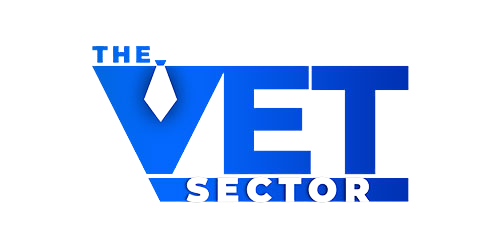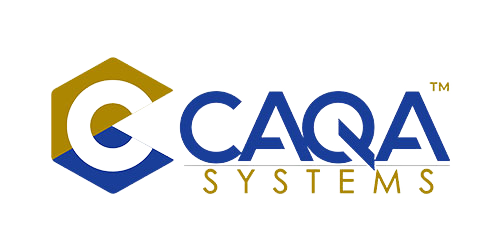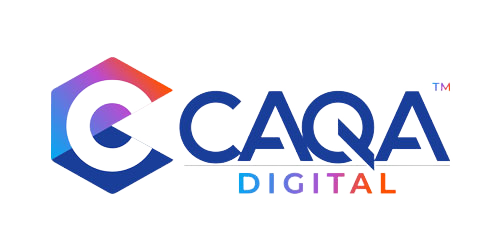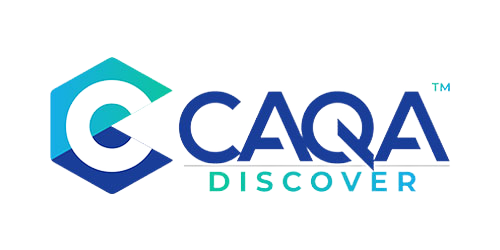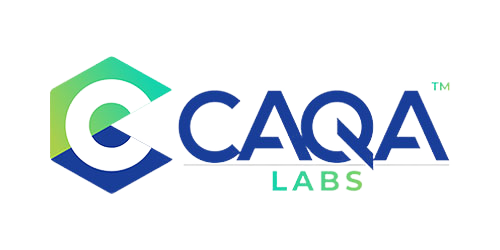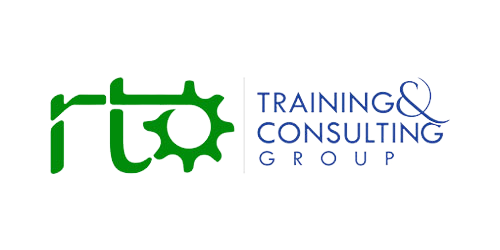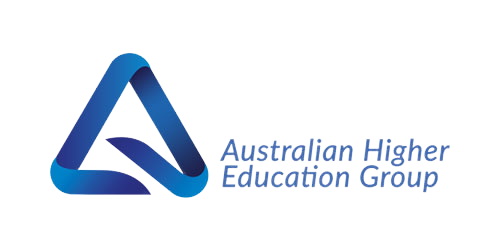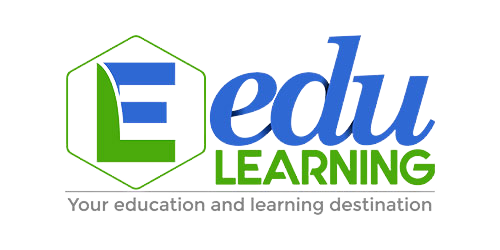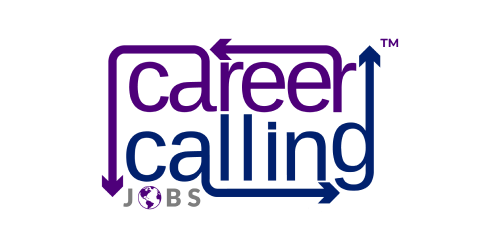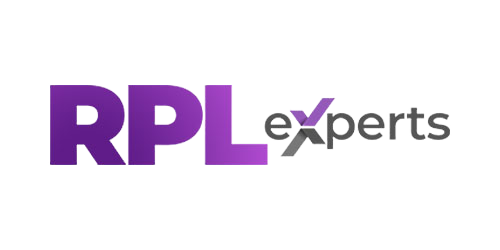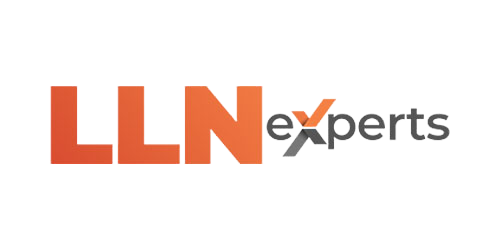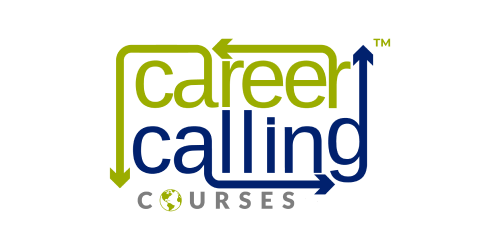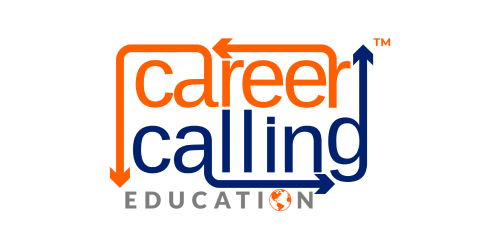THE QUANTUM LEAP: REDEFINING SKILLS DEVELOPMENT IN THE DIGITAL AGE
The vocational education and training sector stands on the precipice of its most profound transformation since the Industrial Revolution. As quantum computing transitions from theoretical concept to practical reality, its convergence with artificial intelligence, immersive technologies, and advanced biotechnology promises to fundamentally reimagine how skills are developed, delivered, and deployed across the global workforce. This isn't simply an evolution of existing approaches but a quantum leap into entirely new paradigms of learning and work that will redefine the very purpose of vocational education in the coming decades.
The statistics paint a compelling picture of this accelerating transformation. Early trials of quantum-powered adaptive learning systems are already demonstrating a remarkable 40% improvement in knowledge retention compared to traditional approaches. By 2040, quantum-processed molecular modelling simulations for advanced manufacturing training are projected to achieve 99.9% accuracy, enabling unprecedented precision in skills development. Perhaps most significantly, 85% of OECD countries plan to implement quantum literacy programs in their VET curricula by 2035, recognising that quantum fluency will become as fundamental to workforce participation as digital literacy is today.
What makes quantum computing's impact on vocational education so revolutionary is its ability to process immense datasets and complex simulations that were previously computationally impossible. This breakthrough doesn't simply make existing training more efficient—it enables entirely new approaches to skills development that mirror the complexity of real-world challenges. From personalised learning journeys that adapt in real-time to individual cognitive patterns to immersive simulations that replicate dangerous or costly workplace scenarios with perfect fidelity, quantum computing will transform vocational education from a standardised delivery model to a dynamic, responsive ecosystem of continuous skills development.
The implications extend far beyond the classroom or workshop. Quantum-enabled upskilling could address 73% of predicted skills gaps in advanced manufacturing and clean energy sectors by 2040, providing a critical bridge between current workforce capabilities and future industry requirements. As automation accelerates across global economies, quantum computing will not only drive the displacement of routine tasks but simultaneously enable the rapid reskilling necessary for workers to transition into emerging roles. This dual role—both accelerating technological disruption and enabling human adaptation—makes quantum computing perhaps the most consequential technology for the future of work and skills development.
PERSONALISED LEARNING ECOSYSTEMS: THE END OF ONE-SIZE-FITS-ALL TRAINING
The standardised curriculum—a foundational element of vocational education since its inception—is rapidly becoming an artifact of the pre-quantum era. As quantum algorithms demonstrate the ability to analyse individual learning patterns up to 1,000 times faster than classical computers, the entire paradigm of skills development is shifting toward hyperpersonalized learning ecosystems that continuously adapt to each learner's unique cognitive profile, progress, and career trajectory.
This transformation begins with quantum-enhanced diagnostic assessments that can map not just what a learner knows but how they learn, identifying cognitive strengths, knowledge gaps, preferred modalities, optimal challenge levels, and even diurnal productivity patterns. These comprehensive cognitive profiles then inform adaptive learning systems that continuously recalibrate content, pacing, examples, assessment methods, and support interventions based on real-time performance data. The result is a learning experience tailored with such precision that every interaction becomes optimised for maximum engagement and retention.
The implications for addressing persistent challenges in vocational education are profound. Historically underserved learners who may have struggled in traditional, standardised environments find themselves supported by systems that recognise and accommodate their unique learning profiles. Complex technical skills that once required extensive repetition can be acquired more efficiently through personalised learning sequences that target specific competency gaps. Perhaps most importantly, the artificial distinction between theoretical knowledge and practical application begins to dissolve as quantum-powered simulations seamlessly integrate conceptual understanding with applied problem-solving in contexts that mirror workplace realities.
This personalisation extends beyond content delivery to encompass the entire learning journey. Quantum algorithms analysing labour market data can align individual skill development with emerging opportunity areas, ensuring that career pathways remain relevant despite rapid technological change. Predictive analytics leveraging quantum computation could reduce student dropout rates by 35% through early intervention systems that identify disengagement patterns before they manifest as attrition. By 2040, AI-generated micro-credentials may account for 40% of workforce certifications, enabling truly modular, stackable qualifications that reflect individual career trajectories rather than standardised programs.
The economic impact of this shift toward personalisation is equally significant. Quantum-processed VR simulations could reduce practical training costs by 60% in high-risk industries like healthcare and construction while simultaneously improving safety outcomes. For employers, this translates to more efficient onboarding, reduced training time, and higher workforce productivity. For learners, it means more engaging, relevant skill development pathways with demonstrable returns on investment.
IMMERSIVE REALITIES: BRIDGING THE THEORY-PRACTICE DIVIDE
Perhaps the most visible manifestation of quantum computing's impact on vocational education will be the proliferation of immersive training environments that transcend current limitations in replicating workplace conditions. Quantum processing power enables simulation complexity that was previously unattainable, creating virtual and augmented reality experiences so authentic that the boundaries between training and real-world application become increasingly indistinguishable.
The statistics reveal an industry already embracing this potential. Currently, 92% of healthcare VET programs plan to implement VR surgical simulations by 2030, allowing trainees to develop psychomotor skills and decision-making capabilities in consequence-free environments before working with actual patients. In construction, AR hazard simulations have already demonstrated a 62% reduction in training-related accidents, providing visceral, experiential learning about workplace safety without exposing learners to genuine risk. As quantum computing exponentially increases the fidelity and responsiveness of these simulations, their adoption across vocational fields will accelerate dramatically.
What distinguishes quantum-enhanced immersive learning from current VR/AR applications is its unprecedented verisimilitude. Quantum simulation capabilities enable physics-accurate modelling of complex systems—from the behaviour of materials under stress to the intricacies of molecular interactions in chemical processes. This means apprentice welders can observe in real-time how different techniques affect metal crystallisation at the molecular level. Healthcare trainees can interact with anatomically perfect simulations that react precisely as human tissues would. Renewable energy technicians can troubleshoot equipment malfunctions across thousands of potential failure scenarios without accessing physical infrastructure.
Beyond static scenarios, quantum processing enables dynamic, branching simulations that respond intelligently to learner decisions. Every choice triggers cascading consequences that mirror real-world complexity, developing not just technical skills but the critical thinking and adaptive problem-solving capabilities essential for workplace success. These environments can simulate not only technical processes but also interpersonal dynamics, allowing learners to develop communication, collaboration, and leadership skills in contextually relevant scenarios.
The economic implications are substantial. By 2035, quantum-processed VR simulations could reduce practical training costs by 60% across high-risk industries while simultaneously improving safety outcomes and skill transfer. For employers facing acute skills shortages, these technologies offer pathways to accelerate workforce development without compromising quality or safety. For vocational institutions, immersive technologies provide solutions to persistent challenges around equipment access, teaching consistency, and practical assessment at scale.
GLOBAL SKILLS ECOSYSTEMS: TRANSCENDING NATIONAL BOUNDARIES
The convergence of quantum computing with blockchain technology and artificial intelligence is catalysing the development of global skills ecosystems that transcend traditional geographical and institutional boundaries. As learning becomes increasingly modularised, digitised, and machine-verifiable, the foundations are being laid for truly borderless workforce development that could fundamentally reshape how vocational qualifications are earned, verified, and valued.
The emergence of quantum-secured blockchain credentials represents a pivotal development in this evolution. Projections indicate that 90% of VET institutions will adopt blockchain-based quantum-secured certification systems by 2050, creating tamper-proof, instantly verifiable records of skills and competencies. These systems prevent 98% of certification fraud while reducing administrative costs for credential validation by 55%. More fundamentally, they enable skills and competencies to become the primary currency of employment rather than proxy measures like degrees or time served in traditional programs.
This technological foundation is enabling unprecedented standardisation of skills frameworks across national boundaries. By 2040, 74 countries are expected to adopt UNESCO's global skills passport system, creating common taxonomies and assessment standards that allow workers to seamlessly transition between economies based on verified competencies rather than nation-specific qualifications. These frameworks are particularly crucial for emerging fields where standards are still evolving—quantum technology itself being a prime example.
The implications for individual learners are profound. Vocational pathways that were once constrained by local institutional offerings can now incorporate learning modules from global providers, creating customised skill development journeys that draw from best-in-class resources regardless of location. Quantum-powered translation systems eliminate language barriers, making technical training accessible across linguistic boundaries. AI-facilitated peer learning networks connect trainees with similar interests across continents, creating global communities of practice that accelerate knowledge transfer and innovation.
For industries facing critical skills shortages, these global frameworks offer mechanisms to rapidly develop talent pools that transcend national boundaries. Quantum-driven predictive analytics will enable real-time workforce demand forecasting with 70% greater accuracy, allowing training providers to adjust program offerings in anticipation of emerging skills needs rather than reacting to established shortages. This proactive approach to workforce development could fundamentally alter how national economies manage human capital development in response to technological and market shifts.
THE GREEN SKILLS IMPERATIVE: SUSTAINABLE DEVELOPMENT THROUGH QUANTUM ADVANCEMENT
The convergence of quantum computing capabilities with sustainability imperatives is creating unprecedented opportunities to accelerate the development of green skills—the technical and professional capabilities required to build and maintain a low-carbon, resource-efficient economy. As climate change and environmental degradation intensify, vocational education's role in equipping workers with sustainability competencies has become increasingly central to global economic transformation.
The data reveals a sector already responding to this imperative, with renewable energy qualifications growing 240% globally between 2020 and 2025. By 2035, green skills components are projected to be mandatory in 80% of technical roles, reflecting both regulatory requirements and market demand. Meanwhile, 68% of manufacturers now require circular economy competencies in technical staff, indicating a fundamental shift in how production systems are conceptualised and operated.
Quantum computing dramatically accelerates this transition by enabling more sophisticated modelling of complex environmental systems and optimisation of resource-intensive processes. Quantum simulations will accelerate material science research, leading to 30% faster development of sustainable construction materials by enhancing researchers' ability to model molecular interactions and predict material properties without extensive physical prototyping. Similarly, quantum algorithms can optimise energy systems with unprecedented precision, enabling the integration of renewable sources at scales previously considered impractical.
For vocational education providers, these capabilities translate into training opportunities that directly address the most pressing challenges of environmental sustainability. Quantum-enhanced simulations allow learners to visualise complex environmental systems and understand how technical interventions affect ecological outcomes. Virtual laboratories enable experimentation with renewable technologies and circular production processes without physical infrastructure constraints. Predictive models illuminate the long-term consequences of different approaches to resource management, developing the systems thinking capabilities essential for sustainable practice.
The economic implications are equally significant. As carbon pricing mechanisms become more prevalent and resource constraints intensify, workers with demonstrated sustainability competencies will command premium wages across sectors. Vocational institutions that effectively integrate green skills development into their programs position graduates for resilient, future-proof careers while simultaneously addressing urgent environmental challenges. Government-backed quantum education initiatives providing $10 billion in funding globally by 2035 will further accelerate this integration, recognising that workforce transformation is essential to achieving climate targets.
ETHICAL FRONTIERS: NAVIGATING THE HUMAN DIMENSIONS OF TECHNOLOGICAL TRANSFORMATION
The quantum revolution in vocational education brings unprecedented capabilities but also profound ethical challenges that institutions, policymakers, and learners must navigate. As technology increasingly mediates skill development processes, questions of equity, privacy, autonomy, and social impact demand thoughtful consideration and proactive governance.
Perhaps the most pressing ethical concern is equitable access to quantum-enhanced education. The data reveals stark disparities, with only 40% of developing nations expected to implement quantum literacy programs by 2040. Similar gaps exist within developed economies, where 62% of VET providers cite quantum infrastructure costs as major barriers to adoption. Without deliberate intervention, these technologies that promise democratised learning could instead entrench and amplify existing inequalities, creating a two-tier system where only the privileged have access to the most effective training methodologies.
Privacy considerations take on new dimensions as quantum-enhanced learning systems gather and process unprecedented volumes of data about individual cognitive processes, learning patterns, and competency development. While this data enables the personalisation that makes these systems effective, it also creates potential vulnerabilities around the most intimate aspects of human learning and development. Robust governance frameworks must balance the benefits of data-driven instruction with learners' rights to cognitive privacy and autonomy over their educational journeys.
The accelerating automation of both manual and cognitive tasks raises profound questions about vocational education's purpose in an era of diminishing traditional employment. Quantum-enhanced AI is expected to automate 45% of routine vocational tasks by 2045, disrupting established career pathways and requiring fundamental reconsideration of which human capabilities should be developed and how. Vocational education must shift from training for specific occupations toward cultivating adaptability, creativity, critical thinking, and uniquely human capacities that remain valuable as technological capabilities expand.
Emerging technologies also raise ethical questions around assessment validity and certification integrity. As AI becomes increasingly sophisticated at generating content and completing tasks, distinguishing between human and machine-generated work grows more challenging. Quantum-secured verification systems and biometric authentication may provide technical solutions, but they must be implemented within ethical frameworks that respect learner agency and recognise the legitimate role of technological augmentation in skill development.
Public attitudes toward these technologies reveal persistent concerns, with 45% expressing distrust in AI-mediated learning systems. Addressing this trust deficit requires not just technical safeguards but genuine stakeholder engagement, transparent governance, and ethical frameworks that centre human wellbeing and autonomy. Without this foundation of trust, even the most sophisticated quantum-enhanced learning systems may face resistance and limited adoption.
WORKFORCE TRANSFORMATION: RESKILLING FOR THE QUANTUM AGE
The convergence of quantum computing with automation, artificial intelligence, and advanced manufacturing is accelerating workforce transformation at an unprecedented pace, fundamentally altering the skills landscape across sectors. For vocational education providers, this transformation presents both immense challenges and unparalleled opportunities to reimagine their role in preparing workers for rapidly evolving labour markets.
Quantum-enhanced AI is projected to automate 45% of routine vocational tasks by 2045, displacing traditional roles while simultaneously creating demand for entirely new skill sets. This automation wave differs fundamentally from previous technological transitions in its impact on cognitive as well as manual tasks, affecting roles previously considered immune to technological displacement. The vocational sector's response must be equally transformative, moving beyond incremental adaptation to fundamental reimagination of training models, content, and delivery mechanisms.
The scale of required reskilling is immense but not insurmountable. Quantum-enabled upskilling could address 73% of predicted skills gaps in advanced manufacturing and clean energy sectors, providing pathways for workers to transition from declining industries to growth areas. Industry partnerships will drive quantum upskilling programs, ensuring 80% of technical workers receive quantum-related training by 2050. These initiatives recognise that workforce development is not merely an educational challenge but a strategic economic imperative requiring coordinated action across sectors.
Vocational education's role in this transition extends beyond technical training to encompass broader adaptive capabilities. As technological change accelerates, the half-life of specific technical skills continues to shrink, while the value of foundational competencies like systems thinking, complex problem-solving, and continuous learning increases. Quantum-enhanced learning systems can develop these meta-skills through simulations and scenarios that require holistic thinking and adaptability rather than mere technical proficiency.
The emergence of quantum computing itself creates demand for new vocational specialisations. From quantum circuit technicians to quantum security specialists, entirely new career paths are emerging that blend traditional trades with advanced quantum knowledge. By 2035, government-backed quantum education initiatives will provide $10 billion in funding globally to support VET integration in these fields, recognising that mid-skill technical roles will be essential to the quantum economy's development.
For individual learners, this transformation demands new approaches to career planning and skill development. Linear career progressions are increasingly replaced by portfolio careers requiring continuous reskilling and adaptation. Vocational education must respond with modular, stackable credentials that allow workers to rapidly acquire specific competencies in response to market signals. Micro-credential completions increased 315% between 2020 and 2025, reflecting this shift toward more granular, responsive qualification frameworks.
POLICY IMPERATIVES: ENABLING THE QUANTUM TRANSFORMATION
The quantum revolution in vocational education cannot reach its full potential through technological development alone. It requires coordinated policy responses that address infrastructure needs, regulatory frameworks, funding models, and equity considerations to create an enabling environment for transformation while mitigating potential risks and disparities.
Infrastructure development represents the most immediate policy challenge. Quantum computing capabilities require significant physical infrastructure, from the quantum processors themselves to the high-speed connectivity needed to access cloud-based quantum resources. Government-backed quantum education initiatives providing $10 billion in funding globally by 2035 will be essential to building this foundation, particularly for public vocational institutions that cannot independently finance such investments. Without deliberate public investment, access to quantum-enhanced learning risks becoming concentrated in elite institutions, exacerbating rather than ameliorating educational inequalities.
Regulatory frameworks must evolve to accommodate new models of skill development and certification. Current vocational qualification systems often rest on input measures (training hours, curriculum coverage) rather than demonstrated competencies. The quantum shift toward personalised, adaptive learning requires corresponding regulatory evolution toward outcomes-based qualification frameworks that recognise skills and competencies regardless of how they were acquired. By 2040, 74 countries are expected to adopt UNESCO's global skills passport system, necessitating harmonisation of regulatory approaches across jurisdictions.
Funding models require a similar transformation to support lifelong learning in an era of continuous technological disruption. Traditional front-loaded education funding focused on initial qualification is increasingly misaligned with the reality of careers requiring multiple skill transitions. Innovation in funding mechanisms—including skills accounts, tax incentives for continuing education, and income-share agreements—will be essential to finance the ongoing reskilling that quantum-accelerated automation necessitates.
Data governance represents another critical policy frontier. Quantum-enhanced learning systems generate unprecedented volumes of data about individual cognitive processes and learning patterns, creating both opportunities for personalisation and risks to privacy and autonomy. Robust governance frameworks must balance the benefits of data-driven instruction with appropriate safeguards for learner privacy and data security, particularly as quantum computing itself transforms cybersecurity paradigms.
Equity considerations must be central to all policy development in this space. The data reveals concerning disparities, with only 40% of developing nations expected to implement quantum literacy programs by 2040. Similar gaps exist within developed economies across socioeconomic, geographical, and demographic dimensions. Without deliberate policy interventions—including targeted funding, capacity building, and infrastructure development in underserved communities—quantum-enhanced education could exacerbate rather than address existing inequalities.
CONCLUSION: SEIZING THE QUANTUM MOMENT
The convergence of quantum computing with artificial intelligence, immersive technologies, and advanced manufacturing represents not merely an evolution but a revolution in how skills are developed, deployed, and valued across the global economy. For vocational education and training, this quantum moment presents both profound challenges and unprecedented opportunities to reimagine its purpose, methods, and impact in preparing workers for rapidly transforming labour markets.
The statistics paint a clear picture of acceleration: 40% improvement in knowledge retention through quantum-powered adaptive learning; 60% reduction in training costs through quantum-processed simulations; 73% of predicted skills gaps addressed through quantum-enabled upskilling. Behind these numbers lies a fundamental shift from standardised, institution-centric education toward personalised, learner-centric skill development that transcends traditional boundaries of time, place, and institutional context.
This transformation could not come at a more critical moment. As societies grapple with intersecting challenges of technological disruption, climate change, demographic shifts, and economic uncertainty, the capacity to develop and deploy human potential effectively has never been more essential. Quantum-enhanced vocational education offers pathways to address skills shortages in critical sectors from healthcare to renewable energy, accelerate the transition to sustainable production systems, and enable workers to adapt to rapidly changing occupational landscapes.
Yet the quantum revolution in vocational education is not inevitable. It requires deliberate choices by policymakers, institutional leaders, industry partners, and learners themselves. Infrastructure investments, regulatory reforms, funding innovations, and ethical frameworks must evolve in parallel with technological capabilities to ensure that quantum-enhanced learning serves broader social purposes rather than merely accelerating existing trends toward inequality and polarisation.
The stakes could not be higher. The quantum transformation of vocational education represents not just a technological shift but a societal choice about how we develop and value human capabilities in an era of unprecedented change. By embracing the potential of these emerging technologies while thoughtfully addressing their challenges, vocational education can fulfil its essential mission of connecting human potential with economic opportunity and social purpose, creating pathways to prosperity that are as quantum in their impact as the technologies that enable them.








